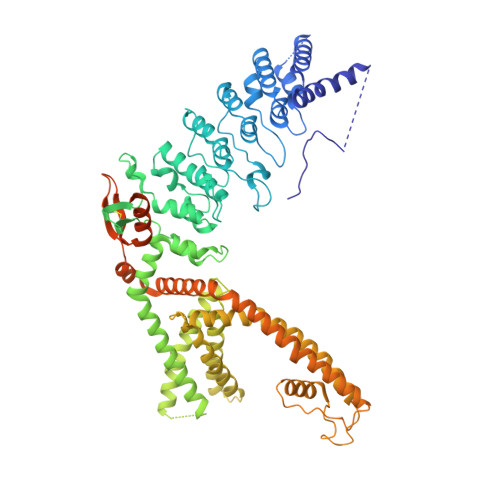Regulatory switch at the cytoplasmic interface controls TRPV channel gating.
Zubcevic, L., Borschel, W.F., Hsu, A.L., Borgnia, M.J., Lee, S.Y.(2019) Elife 8
- PubMed: 31070581
- DOI: https://doi.org/10.7554/eLife.47746
- Primary Citation of Related Structures:
6OT2, 6OT5 - PubMed Abstract:
Temperature-sensitive transient receptor potential vanilloid (thermoTRPV) channels are activated by ligands and heat, and are involved in various physiological processes. ThermoTRPV channels possess a large cytoplasmic ring consisting of N-terminal ankyrin repeat domains (ARD) and C-terminal domains (CTD). The cytoplasmic inter-protomer interface is unique and consists of a CTD coiled around a β-sheet which makes contacts with the neighboring ARD. Despite much existing evidence that the cytoplasmic ring is important for thermoTRPV function, the mechanism by which this unique structure is involved in thermoTRPV gating has not been clear. Here, we present cryo-EM and electrophysiological studies which demonstrate that TRPV3 gating involves large rearrangements at the cytoplasmic inter-protomer interface and that this motion triggers coupling between cytoplasmic and transmembrane domains, priming the channel for opening. Furthermore, our studies unveil the role of this interface in the distinct biophysical and physiological properties of individual thermoTRPV subtypes.
Organizational Affiliation:
Department of Biochemistry, Duke University School of Medicine, Durham, United States.















